
Garapan: The Heartbeat of Saipan
Discover Garapan: Saipan’s bustling heart, where history, culture, and beachside relaxation converge for an unforgettable tropical escape.
Garapan, nestled in the vibrant island of Saipan in the Northern Mariana Islands, is a delightful blend of rich history, bustling markets, and serene beaches. As the island’s main commercial hub, Garapan offers an array of activities for every kind of traveler. From the moment you step into this neighborhood, you will be greeted by a warm and welcoming atmosphere that is distinctly Pacific. Explore the historical sites that tell tales of World War II and the island’s fascinating past. The American Memorial Park is a must-visit, offering beautiful gardens and a poignant museum that sheds light on the region's history. For those interested in local culture, the Garapan Street Market is a lively affair where you can indulge in delicious local cuisine, shop for unique handicrafts, and enjoy live performances. Beach lovers will find their paradise in Garapan. Micro Beach, with its powdery white sand and clear turquoise waters, is perfect for a relaxing day under the sun or engaging in water sports like snorkeling and jet skiing. The sunsets here are nothing short of spectacular, painting the sky in hues of orange and pink. In the evenings, Garapan transforms into a lively nightlife spot. Enjoy a meal at one of the many restaurants offering a mix of local and international cuisines, or sip on a cocktail at a beachside bar while listening to live music. The neighborhood’s compact size makes it easy to explore on foot, allowing you to soak in the vibrant atmosphere and discover hidden gems around every corner.
Local tips in Garapan
- Visit the American Memorial Park early in the morning to avoid crowds and enjoy a peaceful stroll through the gardens.
- Bring cash to the Garapan Street Market as some vendors may not accept credit cards.
- Rent a bicycle to explore Garapan and its surrounding areas easily and at your own pace.
- Try the local delicacy, Kelaguen, at one of the many food stalls for an authentic taste of the islands.
- Check the local event calendar for cultural performances and festivals happening during your visit.
Garapan: The Heartbeat of Saipan
Garapan, nestled in the vibrant island of Saipan in the Northern Mariana Islands, is a delightful blend of rich history, bustling markets, and serene beaches. As the island’s main commercial hub, Garapan offers an array of activities for every kind of traveler. From the moment you step into this neighborhood, you will be greeted by a warm and welcoming atmosphere that is distinctly Pacific. Explore the historical sites that tell tales of World War II and the island’s fascinating past. The American Memorial Park is a must-visit, offering beautiful gardens and a poignant museum that sheds light on the region's history. For those interested in local culture, the Garapan Street Market is a lively affair where you can indulge in delicious local cuisine, shop for unique handicrafts, and enjoy live performances. Beach lovers will find their paradise in Garapan. Micro Beach, with its powdery white sand and clear turquoise waters, is perfect for a relaxing day under the sun or engaging in water sports like snorkeling and jet skiing. The sunsets here are nothing short of spectacular, painting the sky in hues of orange and pink. In the evenings, Garapan transforms into a lively nightlife spot. Enjoy a meal at one of the many restaurants offering a mix of local and international cuisines, or sip on a cocktail at a beachside bar while listening to live music. The neighborhood’s compact size makes it easy to explore on foot, allowing you to soak in the vibrant atmosphere and discover hidden gems around every corner.
Iconic landmarks you can’t miss
Banzai Cliff Monument
Discover the breathtaking beauty and historical significance of Banzai Cliff Monument in Saipan, a must-visit destination for every traveler.

American Memorial Park
Explore the serene beauty and historical significance of American Memorial Park in Saipan, a tribute to wartime heroes amidst lush landscapes.

Micro Beach
Discover the stunning Micro Beach in Saipan, a tropical paradise renowned for its soft sands, clear waters, and vibrant marine life, perfect for relaxation and adventure.

Japanese Lighthouse
Explore the historic Japanese Lighthouse in Saipan, a stunning landmark offering breathtaking views and a glimpse into the region's rich maritime heritage.

Kristo Rai Bell Tower
Explore the historic Kristo Rai Bell Tower in Saipan, a stunning landmark that reflects the rich cultural heritage of the Northern Mariana Islands.

NMI Museum of History and Culture
Explore the captivating history and culture of the Northern Mariana Islands at the NMI Museum of History and Culture in Saipan.

Old Japanese Jail
Explore the Old Japanese Jail in Saipan, a haunting yet fascinating historical site reflecting the island's rich cultural heritage.

Sugar King Park
Experience the natural beauty and cultural charm of Sugar King Park in Saipan, a serene oasis for relaxation and exploration amidst tropical splendor.

US Marine Memorial
Explore the US Marine Memorial in Saipan, a tribute to bravery and sacrifice, set against stunning natural beauty and rich historical significance.

Garapan Central Park
Experience the lush beauty and tranquil atmosphere of Garapan Central Park, a hidden gem in Saipan, Northern Mariana Islands.

Saipan American Memorial
Explore the Saipan American Memorial, a poignant historical landmark honoring the brave soldiers of World War II surrounded by serene natural beauty.

Sugar Train
Discover the historical significance of Sugar Train in Garapan, Saipan, and experience the rich cultural heritage of the Northern Mariana Islands.
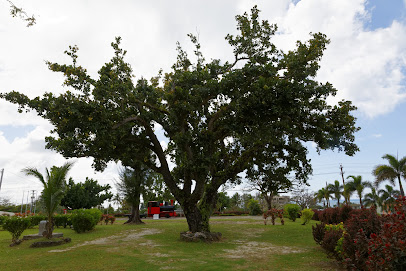
Purple Heart Ridge
Explore the historical significance of Purple Heart Ridge in Saipan, a landmark honoring the bravery of soldiers during World War II amidst stunning landscapes.

旧大日本帝国南洋庁立サイパン医院
Explore the historical significance of the Old Japanese Hospital in Garapan, a captivating landmark that tells the story of Saipan's rich cultural heritage.

Unmissable attractions to see
The Grotto
Discover the mesmerizing beauty of The Grotto in Saipan, a must-visit destination for snorkeling and spectacular underwater vistas.

Old Japanese Jail
Discover the Old Japanese Jail in Saipan, a significant historical site that reveals the island's unique heritage and World War II legacy.

Sugar King Park
Discover the soothing beauty of Sugar King Park, a lush oasis in Saipan's China Town, perfect for relaxation and exploration amidst nature.

Dragon Tail Beach
Experience the tranquil beauty and stunning vistas of Dragon Tail Beach in Saipan, a perfect escape for relaxation and exploration.

Garapan Central Park
Discover the serene beauty and cultural richness of Garapan Central Park in Saipan, a perfect retreat for relaxation and exploration.

Saipan Katori Shrine
Discover the tranquility and cultural richness of Saipan Katori Shrine, a serene Shinto shrine offering a unique glimpse into Japan's spiritual heritage.

Essential places to dine
Wild Bill's Bar & Grill
Discover diverse culinary delights at Wild Bill's Bar & Grill in Garapan - where American meets Asian cuisine amidst stunning views.

Naked Fish Bar & Grill
Experience fresh seafood delights and vibrant live music at Naked Fish Bar & Grill in Saipan's beautiful coastal setting.
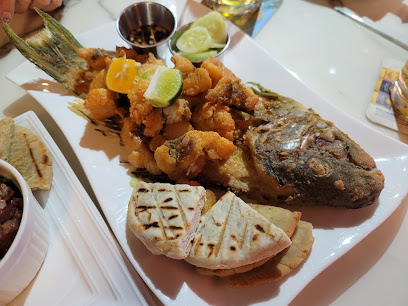
Coco Restaurant
Discover the flavors of Saipan at Coco Restaurant, where every dish tells a story of culinary excellence in the heart of Garapan.

Garapan Restaurant Cafe & Grill
Experience authentic Japanese cuisine and local flavors at Garapan Restaurant Cafe & Grill in Saipan's vibrant dining scene.

MiloSun
Experience the vibrant flavors of Western cuisine at MiloSun in Garapan, Saipan - where every meal is a celebration!

Bravo Kitchen & Bar
Experience delectable Western cuisine in a vibrant setting at Bravo Kitchen & Bar, Saipan's culinary gem offering exceptional service and unforgettable flavors.

Fisherman's Wharf
Experience Fisherman's Wharf in Saipan: A Culinary Paradise with Stunning Ocean Views and Vibrant Local Culture.

Dionysos Restaurant & Bar
Experience exquisite dining at Dionysos Restaurant & Bar in Garapan, where local flavors meet international cuisine amid stunning island views.

Bourbon Street Cafe Bar Restaurant
Experience delightful American cuisine at Bourbon Street Cafe Bar Restaurant in Garapan, Saipan – where flavor meets island charm.
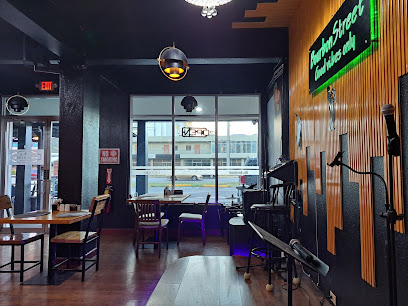
Island Restaurant
Discover flavorful dishes at Island Restaurant in Saipan, blending local ingredients with international flair amidst stunning beachside views.

Markets, malls and hidden boutiques
Mamastore 마마스토아
Explore an enchanting gift shop in Saipan, offering unique local crafts and souvenirs that capture the essence of the Northern Mariana Islands.

Hybrid Shop
Explore the vibrant Hybrid Shop in Garapan, Saipan, offering unique gifts, clothing, and souvenirs that capture the spirit of the Northern Mariana Islands.

Made In Saipan
Explore Made In Saipan for unique gifts and authentic handcrafted treasures that capture the essence of the Northern Mariana Islands.

T Market
Explore T Market in Saipan for unique souvenirs and local crafts that beautifully capture the essence of the Northern Mariana Islands.

Latte Store 라떼 스토어
Explore the vibrant essence of Saipan at Latte Store, where local craftsmanship meets unique gift shopping in a friendly atmosphere.

Dollar Days
Explore Dollar Days in Garapan, Saipan – your go-to destination for unique gifts, vibrant balloons, and delightful party supplies.

Monika's Treasures
Explore Monika's Treasures in Garapan for unique souvenirs and local crafts that embody the spirit of the Northern Mariana Islands.

Hong Yuan
Discover unique clothing and accessories at Hong Yuan, a vibrant fashion store in Garapan, Saipan that reflects local culture and style.

Fun max
Explore Fun Max Gift Shop in Garapan for unique souvenirs and local treasures reflecting the essence of Saipan.

Oops boutique
Explore Oops Boutique in Garapan for unique gifts and local crafts that embody the spirit of Saipan's vibrant culture.

Essential bars & hidden hideouts
Jonny's Bar & Grill
Experience the ultimate grill and sports bar vibe at Jonny's Bar & Grill in Garapan, where delicious flavors and lively entertainment await you.
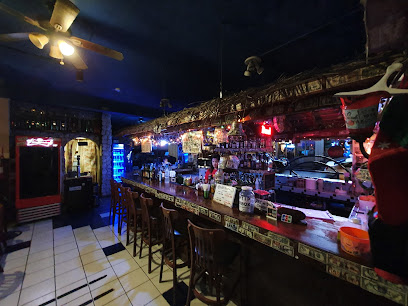
Skipper's Beach Bar
Discover the lively Skipper's Beach Bar in Garapan, where tropical drinks meet stunning beach views for an unforgettable island experience.

Safehouse Bar
Experience the vibrant nightlife of Saipan at Safehouse Bar, where refreshing drinks and a lively atmosphere await every visitor.

Tapped Out
Discover Tapped Out in Saipan: a lively restaurant and brewpub offering a delightful mix of craft beers and delicious cuisine in a vibrant atmosphere.

Relox Bar
Experience the vibrant nightlife of Saipan at Relox Bar, the ultimate karaoke destination for tourists seeking fun and entertainment.

9/Eleven RestoBar
Discover the perfect blend of vibrant bar culture and delicious dining at 9/Eleven RestoBar in Saipan, Northern Mariana Islands.

Cheers Karaoke Bar
Experience the ultimate karaoke night at Cheers Karaoke Bar in Garapan, where every song becomes a cherished memory during your Saipan adventure.
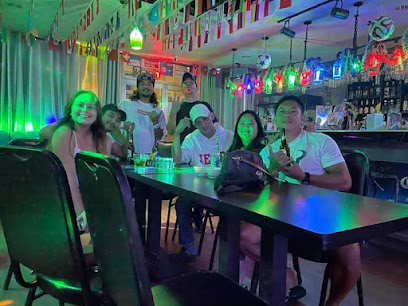
6JMS BAR & GRILL
Discover the lively atmosphere of 6JMS Bar & Grill in Garapan, Saipan, where great food and drinks meet vibrant nightlife and friendly service.

Mari Bar
Discover the tropical allure of Mari Bar in Saipan, where innovative cocktails and a lively atmosphere create unforgettable moments.

kiss bar
Experience Saipan's vibrant nightlife at Kiss Bar, a lively girl bar in Garapan where fun and friendly vibes await every visitor.

Local Phrases
-
- HelloHåfa Adai
[HA-fa A-dye] - GoodbyeAdios
[Ah-dee-ose] - YesHao
[How] - NoTi
[Tee] - Please/You're welcomeKamolem
[Kah-molem] - Thank youSi Yu'us Ma'åse
[See Yoo-oos Mah-ah-seh] - Excuse me/SorryDispensa
[Dee-spen-sah] - How are you?Cómo estás?
[KO-mo es-TAHS] - Fine. And you?Maolek. Yan ikao?
[Mah-oh-lek. Yahn ee-kah-oh] - Do you speak English?Ti man magof English?
[Tee mahn mah-gohf English] - I don't understandTi hu tungo' guåhu
[Tee hoo toong-oh gwah-hoo]
- HelloHåfa Adai
-
- I'd like to see the menu, pleaseKao un tungo' i menyu, un tungo'?
[Kah-oh oon toong-oh ee men-yoo, oon toong-oh] - I don't eat meatTi hu mañaina karne
[Tee hoo mah-nyai-nah kahr-neh] - Cheers!Biba!
[Bee-bah] - I would like to pay, pleaseKao un tungo' i biya, un tungo'?
[Kah-oh oon toong-oh ee bee-ya, oon toong-oh]
- I'd like to see the menu, pleaseKao un tungo' i menyu, un tungo'?
-
- Help!Ayuda!
[Ah-yoo-dah] - Go away!Bai pasa
[Bah-ee pah-sah] - Call the Police!Llamåhi i polisia!
[Yah-mah-hee ee poh-lee-see-ah] - Call a doctor!Llamåhi i dotådu!
[Yah-mah-hee ee doh-tah-doo] - I'm lostTi hu fa'åsågu
[Tee hoo fah-ah-sah-goo] - I'm illTi hu malago'
[Tee hoo mah-lah-goh]
- Help!Ayuda!
-
- I'd like to buy...Kao un chumuk...
[Kah-oh oon choo-mook] - I'm just lookingKao un hafa na'chu
[Kah-oh oon hah-fah nah-choo] - How much is it?Kåo mameskanta?
[Kah-oh mah-mehs-kahn-tah] - That's too expensiveKåo na'ån maliket pås yan
[Kah-oh nahn mah-lee-keht pahs yahn] - Can you lower the price?Mameskanta kumuentos?
[Mah-mehs-kahn-tah koo-men-tos]
- I'd like to buy...Kao un chumuk...
-
- What time is it?Kåo na'ån tiempo?
[Kah-oh nah-ahn tee-ehm-poh] - It's one o'clockKåo na'ån tiempo?
[Kah-oh nah-ahn tee-ehm-poh] - Half past (10)Måkpos (10)
[Mahk-pohs (10)] - MorningGof mañaina
[Gohf mah-nyai-nah] - AfternoonGof tapåtte
[Gohf tah-pah-tteh] - EveningGof tapåtte
[Gohf tah-pah-tteh] - YesterdayKåo na'ån tiempo?
[Kah-oh nah-ahn tee-ehm-poh] - TodayKåo na'ån tiempo?
[Kah-oh nah-ahn tee-ehm-poh] - TomorrowKåo na'ån tiempo?
[Kah-oh nah-ahn tee-ehm-poh] - 1Måno'
[Mah-noh] - 2Duha
[Doo-hah] - 3Tulu
[Too-loo] - 4Fatfat
[Faht-faht] - 5Lima
[Lee-mah] - 6Gunum
[Goo-noon] - 7Fitu
[Fee-too] - 8Guåsu
[Gwah-soo] - 9Saisi
[Sah-ee-see] - 10Månot
[Mah-not]
- What time is it?Kåo na'ån tiempo?
-
- Where's a/the...?Kåo na'ån tiempo?
[Kah-oh nah-ahn tee-ehm-poh] - What's the address?Kåo na'ån tiempo?
[Kah-oh nah-ahn tee-ehm-poh] - Can you show me (on the map)?Kåo na'ån tiempo?
[Kah-oh nah-ahn tee-ehm-poh] - When's the next (bus)?Kåo na'ån tiempo?
[Kah-oh nah-ahn tee-ehm-poh] - A ticket (to ....)Bilite (para i ....)
[Bee-lee-teh pah-rah ee]
- Where's a/the...?Kåo na'ån tiempo?
History of Garapan
-
Garapan, located on Saipan, has deep-rooted history that dates back to the pre-colonial era when it was inhabited by the indigenous Chamorro and Carolinian peoples. These communities lived in harmony with nature, cultivating taro, fishing, and engaging in traditional practices, which laid the foundation for the cultural tapestry of the Northern Mariana Islands.
-
In the late 16th century, the Spanish arrived in the Mariana Islands, including Saipan, marking the beginning of European colonization. The Spanish influence significantly shaped Garapan's cultural landscape, introducing Catholicism, European agricultural practices, and the concept of land ownership, which altered traditional communal living.
-
Garapan became a focal point during World War II, especially during the Battle of Saipan in June and July 1944. This critical conflict between American forces and Japanese defenders resulted in significant destruction and loss of life. The battle marked a turning point in the Pacific theater and led to the eventual surrender of Japanese forces, influencing the post-war restructuring of Garapan and Saipan.
-
After World War II, Garapan underwent extensive reconstruction under American administration. The U.S. government implemented new infrastructure projects, which included roads, schools, and public facilities. This period also saw the establishment of the Commonwealth of the Northern Mariana Islands, fostering a unique blend of American and indigenous cultures.
-
In the late 20th century, Garapan began to embrace its cultural heritage as a focal point for tourism. The revitalization of traditional Chamorro and Carolinian festivals, crafts, and cuisine attracted visitors to the area. Today, Garapan is known for its vibrant cultural scene, which celebrates the rich history of the Northern Mariana Islands while promoting sustainable tourism.
Garapan Essentials
-
Garapan is the central hub of Saipan and can be easily accessed from other neighborhoods via local taxis, which are the most common form of transportation on the island. If you're coming from the airport, taxis are readily available to take you directly to Garapan. Alternatively, some hotels offer shuttle services. For those exploring from further neighborhoods, such as San Jose or Chalan Kanoa, public buses can be used, although schedules may vary.
-
Garapan is a pedestrian-friendly area, making it easy to explore on foot. Local buses are available, but they run on limited schedules, so it's often more convenient to use taxis or rent a bicycle. Bicycles can be rented from local shops, providing a fun way to explore the beachfront and nearby attractions. Additionally, some hotels offer complimentary bicycles for guests.
-
Garapan is generally safe for tourists, but standard precautions should be taken. Avoid isolated areas at night and be aware of your surroundings, especially in crowded places. While violent crime is rare, petty theft can occur, so keep your belongings secure. Specific areas near the beach can attract less desirable crowds after dark, so it's best to stay in well-lit, populated areas.
-
In case of an emergency, dial 911 for police, fire, or medical assistance. Familiarize yourself with the location of the nearest hospital, such as the Commonwealth Health Center, and keep a list of emergency contacts, including your hotel. It is advisable to have travel insurance that covers medical needs. Pharmacies are available in Garapan for minor health issues.
-
Fashion: Do wear lightweight, breathable clothing suitable for the tropical climate, but avoid overly revealing attire, especially in religious sites. Religion: Do respect local customs and traditions. Always behave respectfully in churches and memorial sites. Public Transport: Do be courteous and offer your seat to the elderly and pregnant women. Don't eat or drink on public transport. Greetings: Do greet locals with a friendly smile or 'Hafa Adai.' Don't engage in overly familiar behavior unless invited. Eating & Drinking: Do savor local dishes and try local beverages, such as coconut water. Don't waste food, as it is considered disrespectful.
-
To experience Garapan like a local, visit the local markets in the morning for fresh produce and local delicacies. Engage with local vendors and try traditional Chamorro dishes. Attend local festivals if your visit coincides with any, as they showcase the island's vibrant culture and heritage. Explore the less touristy beaches for a more authentic experience. Don't hesitate to ask locals for recommendations on hidden gems and favorite dining spots.
Trending Landmarks in Garapan
Nearby Cities to Garapan
-
Things To Do in Capital Hill
-
Things To Do in Saipan
-
Things To Do in Kagman
-
Things To Do in San Roque
-
Things To Do in Koblerville
-
Things To Do in Yigo
-
Things To Do in Dededo
-
Things To Do in Tamuning
-
Things To Do in Tumon
-
Things To Do in Mangilao
-
Things To Do in Hagåtña
-
Things To Do in Sinajana
-
Things To Do in Agana Heights
-
Things To Do in Santa Rita
-
Things To Do in Agat











